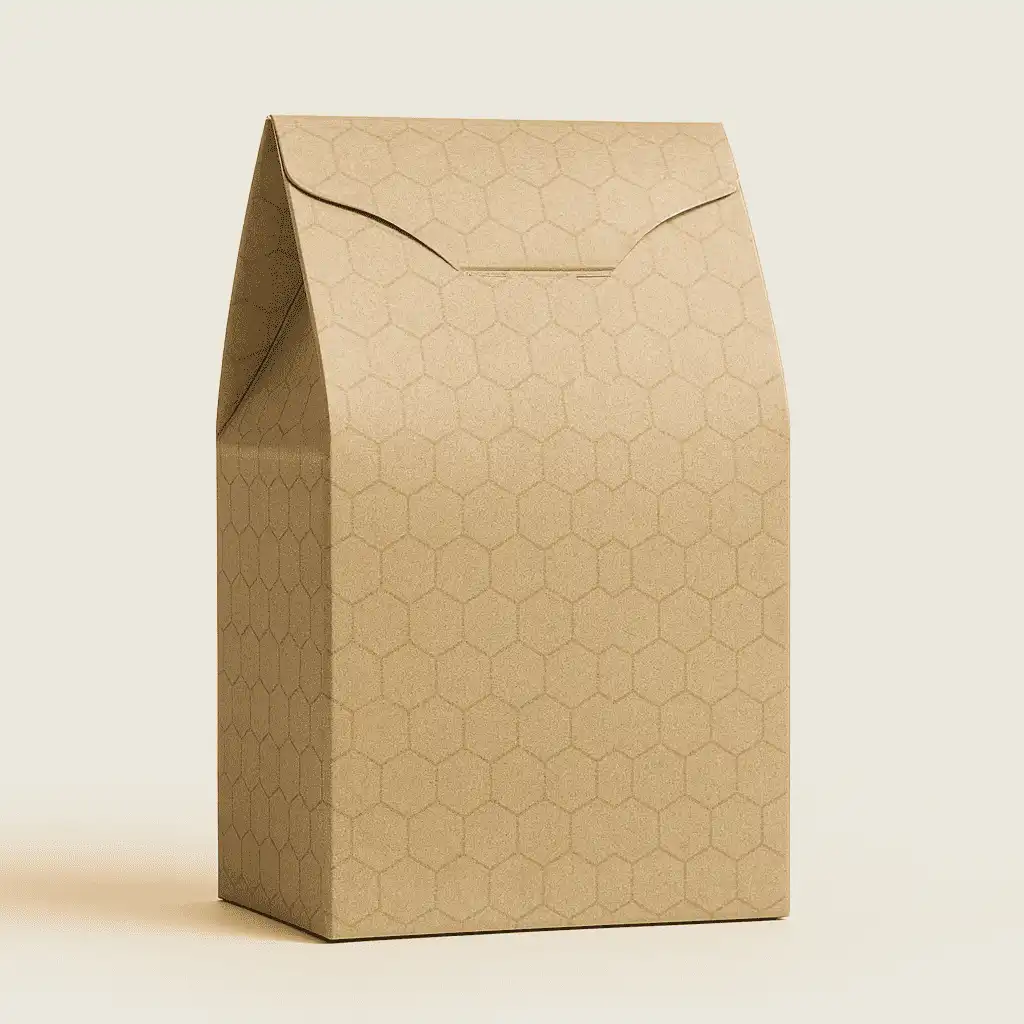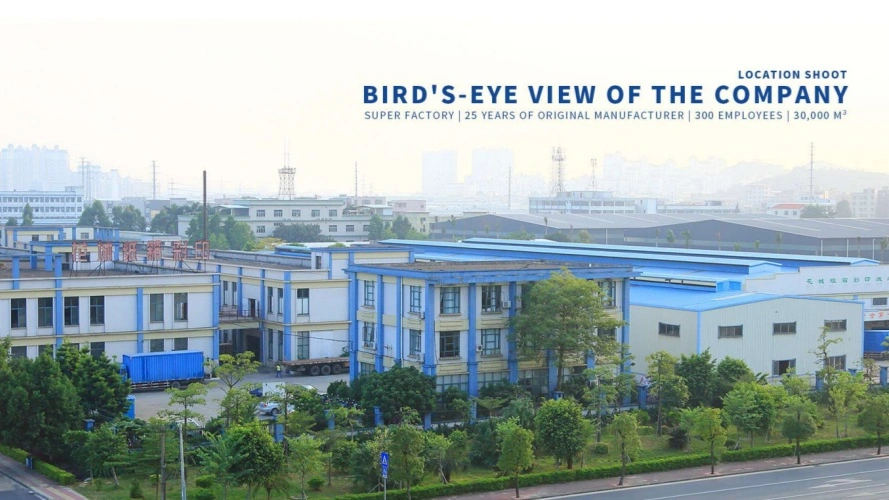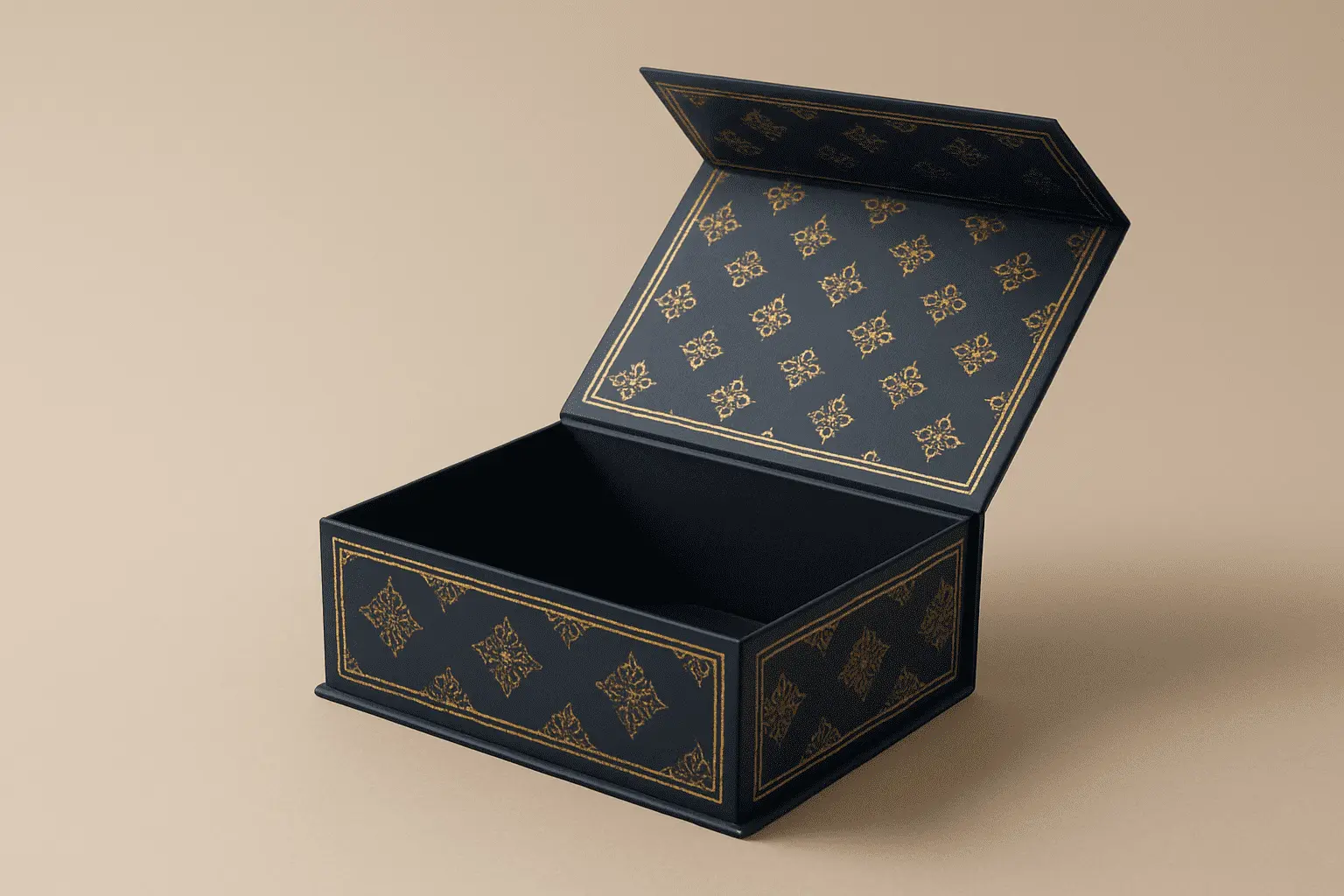Foldable Rigid Box Packaging Style Guide
In today's competitive packaging landscape, brands are constantly seeking innovative solutions that combine luxury appeal with cost-effective shipping and storage benefits. The foldable rigid box represents a revolutionary approach to premium packaging, offering the sophisticated appearance of traditional rigid boxes while delivering significant logistical advantages. This comprehensive guide explores the essential elements of foldable rigid box packaging design, examining how modern manufacturing techniques and strategic material selection can create packaging solutions that captivate consumers while optimizing operational efficiency. Understanding the nuances of foldable rigid box construction, from structural engineering to surface finishing techniques, is crucial for businesses looking to enhance their product presentation without compromising on sustainability or budget considerations.

Essential Design Principles for Foldable Rigid Box Construction
Structural Engineering and Collapsible Mechanisms
The foundation of successful foldable rigid box design lies in understanding the engineering principles that enable these packages to maintain structural integrity while offering convenient collapsibility. Modern collapsible rigid boxes utilize proprietary folding mechanisms that allow the packaging to be shipped flat and assembled on-site, dramatically reducing transportation costs. The key to effective foldable rigid box construction involves strategic placement of score lines, precise die-cutting tolerances, and the integration of magnetic closure systems that ensure secure assembly. Advanced manufacturers employ automated visual positioning production lines to guarantee consistent fold patterns and assembly precision across large production runs. The structural design must account for the specific product dimensions, with different size categories requiring unique engineering approaches. For instance, large foldable rigid boxes designed for products with heights between 100-150mm require reinforced corner structures and enhanced magnetic closures to support heavier contents, while medium-sized variants optimized for 50-100mm product heights can utilize more streamlined construction techniques.
Material Selection and Substrate Optimization
The choice of materials plays a pivotal role in achieving the perfect balance between durability, printability, and cost-effectiveness in foldable rigid box production. Premium substrates like SBS C1S (Solid Bleached Sulfate Coated One Side) provide exceptional print quality with their bright white appearance and smooth coated surface, making them ideal for high-end cosmetics and personal care packaging where brand perception is paramount. The virgin bleached wood pulp construction ensures consistent quality and supports vibrant color reproduction essential for luxury brand positioning. For applications requiring dual-sided printing capabilities, SBS C2S offers superior performance with coated surfaces on both sides, enabling sophisticated interior branding that enhances the unboxing experience. Cost-conscious brands often opt for CCNB (Clay Coated News Back) substrates, which provide reliable print performance at reduced material costs while supporting sustainability initiatives through their high recycled content. The grey recycled back of CCNB materials offers structural strength comparable to virgin materials while appealing to environmentally conscious consumers. Folding carton applications frequently benefit from duplex chipboard construction, where a bright white coated surface is bonded to a grey recycled core, delivering professional print results while maintaining economic efficiency.
Dimensional Standards and Size Categorization
Effective foldable rigid box design requires careful consideration of dimensional standards that optimize both product protection and shipping efficiency. Industry-leading manufacturers typically offer three primary size categories to accommodate diverse product requirements while maintaining production efficiency. Large format collapsible rigid boxes serve products with heights ranging from 100-150mm, incorporating reinforced construction techniques and premium magnetic closure systems to ensure secure containment of substantial items. Medium-sized variants, designed for products measuring 50-100mm in height, strike an optimal balance between material usage and protective capability, making them particularly suitable for electronics packaging and mid-tier cosmetic products. Tiny foldable rigid boxes, engineered for products with heights between 20-50mm, maximize material efficiency while providing luxury presentation for jewelry, watches, and premium accessories. The proprietary structures employed in these size categories represent significant innovations in packaging engineering, with patent-protected designs that deliver superior performance compared to standard collapsible constructions. These dimensional standards enable manufacturers to achieve remarkable cost savings, with studies indicating that properly designed collapsible structures can reduce shipping and storage costs by more than 60% compared to traditional rigid gift boxes, and 20-30% compared to standard collapsible alternatives.
Advanced Manufacturing Techniques and Production Processes
Printing Technology Integration and Quality Control
Modern foldable rigid box production relies heavily on advanced printing technologies that ensure consistent color reproduction and exceptional surface quality across large production runs. Offset printing remains the gold standard for high-volume production, utilizing precision roller systems and controlled ink delivery mechanisms to achieve uniform coverage and sharp detail reproduction. The integration of G7 color management systems ensures that color consistency is maintained throughout the production process, with automated color measurement and adjustment capabilities that minimize variation between print runs. Digital printing technologies have revolutionized short-run production and customization capabilities, enabling cost-effective personalization and variable data printing for premium packaging applications. Flexographic printing techniques prove particularly valuable for corrugated applications where large format capabilities and fast production speeds are essential. The combination of multiple printing technologies within a single facility enables manufacturers to optimize production efficiency while maintaining the flexibility to meet diverse client requirements. Quality control protocols incorporate automated inspection systems that monitor print density, color accuracy, and registration precision throughout the production process, ensuring that every foldable rigid box meets established quality standards before proceeding to finishing operations.
Surface Finishing and Enhancement Techniques
The visual and tactile appeal of foldable rigid box packaging depends significantly on the application of sophisticated surface finishing techniques that elevate the perceived value of the final product. UV coating applications, whether applied as spot treatments or overall coverage, create dramatic visual contrasts while providing enhanced surface protection against scuffing and moisture. Hot foil stamping techniques enable the application of metallic accents that instantly communicate luxury and sophistication, with gold, silver, and specialty colored foils available to complement specific brand aesthetics. Embossing and debossing processes add dimensional interest to package surfaces, creating tactile elements that encourage consumer interaction and enhance brand memorability. The combination of multiple finishing techniques, such as spot UV application followed by embossing, creates layered visual effects that maximize shelf impact and differentiate products in competitive retail environments. Holographic foil stamping represents the pinnacle of anti-counterfeiting protection while delivering stunning visual effects that shift and change with viewing angle. These advanced finishing techniques require precise coordination between printing and converting operations, with specialized equipment and experienced operators essential for achieving consistent results across large production volumes.
Automated Assembly and Quality Assurance Systems
The efficiency and consistency of foldable rigid box production depend heavily on automated assembly systems that ensure precise construction while maintaining high production speeds. Automated visual positioning systems utilize advanced camera technology and machine learning algorithms to verify proper component alignment during assembly, dramatically reducing defect rates and ensuring consistent fold patterns. Die-cutting operations employ computer-controlled systems that maintain cutting precision within tight tolerances, ensuring that fold lines and magnetic closure placements are positioned accurately for optimal assembly performance. The integration of automated gluing systems ensures consistent adhesive application while minimizing waste and reducing production variability. Quality assurance protocols incorporate multiple inspection points throughout the production process, with automated rejection systems that identify and remove defective units before they reach final packaging stages. Statistical process control methodologies track key performance metrics including dimensional accuracy, closure force measurements, and surface finish quality, enabling continuous improvement initiatives that enhance overall production efficiency. The combination of automated production systems and comprehensive quality controls enables manufacturers to achieve remarkable consistency while maintaining the flexibility to accommodate custom requirements and rapid design changes.
Strategic Implementation and Market Applications
Industry-Specific Applications and Customization Strategies
The versatility of foldable rigid box packaging makes it suitable for diverse industry applications, each requiring specific design considerations and customization approaches. In the cosmetics and personal care sector, packaging must communicate luxury and sophistication while protecting delicate products from environmental factors. The integration of premium materials like SBS C2S substrates with metallic foil accents and soft-touch lamination creates packaging experiences that reinforce brand positioning and encourage repeat purchases. Electronics packaging applications prioritize protective functionality while incorporating sophisticated graphics and technical information that educate consumers about product features and benefits. The food industry requires packaging solutions that balance attractive presentation with food safety requirements, often utilizing FDA-approved substrates and barrier coatings that maintain product freshness while supporting vibrant brand graphics. Folding carton applications in the pharmaceutical sector demand precise dimensional control and tamper-evident features while incorporating complex regulatory information and safety warnings. Each industry application requires careful consideration of regulatory requirements, environmental conditions, and consumer expectations to ensure optimal performance and market acceptance.
Cost Optimization and Sustainability Considerations
The economic advantages of foldable rigid box packaging extend beyond simple material cost reductions to encompass comprehensive supply chain optimization strategies. The flat-packed shipping configuration of collapsible rigid boxes enables dramatic improvements in transportation efficiency, with studies indicating that properly designed systems can reduce shipping volumes by up to 60% compared to pre-assembled alternatives. Warehousing and storage benefits are equally significant, with flat-packed inventory requiring substantially less storage space and enabling more efficient inventory management practices. The environmental benefits of optimized shipping extend to reduced carbon footprint and lower fuel consumption throughout the distribution network. Material selection strategies that incorporate recycled content substrates like CCNB and duplex chipboard support corporate sustainability initiatives while maintaining performance standards and cost competitiveness. The durability and reusability of properly constructed foldable rigid boxes contribute to extended product lifecycles and reduced waste generation, aligning with circular economy principles and consumer expectations for responsible packaging practices. Advanced manufacturing techniques that minimize material waste and optimize production efficiency further enhance the sustainability profile of these packaging solutions.
Future Trends and Innovation Opportunities
The evolution of foldable rigid box technology continues to be driven by advancing manufacturing capabilities and changing consumer expectations for packaging experiences. Smart packaging integration represents a significant opportunity for innovation, with QR codes, NFC tags, and augmented reality features becoming increasingly common in premium packaging applications. The development of new substrate materials that combine enhanced performance characteristics with improved sustainability profiles continues to expand design possibilities while addressing environmental concerns. Automation advances in assembly and finishing operations promise to further reduce production costs while improving consistency and quality control capabilities. Customization technologies enable increasingly sophisticated personalization options, from variable data printing to modular design systems that accommodate diverse product configurations within standardized production frameworks. The integration of e-commerce optimization features, such as enhanced protective capabilities and improved unboxing experiences, reflects the growing importance of direct-to-consumer shipping applications. These emerging trends suggest that foldable rigid box packaging will continue to evolve as a sophisticated solution that balances luxury presentation, operational efficiency, and environmental responsibility in an increasingly competitive marketplace.
Conclusion
Foldable rigid box packaging represents a sophisticated solution that successfully bridges the gap between luxury presentation and operational efficiency. Through careful consideration of structural engineering principles, advanced material selection, and innovative manufacturing techniques, these packaging solutions deliver exceptional brand impact while providing significant cost advantages in shipping and storage. The integration of premium finishing techniques with proprietary collapsible mechanisms creates packaging experiences that meet the demanding requirements of modern consumers while supporting corporate sustainability initiatives and budget optimization goals.
Ready to transform your packaging strategy with innovative foldable rigid box solutions? Guangzhou Fetching Color Printing & Packaging Ltd. brings over 20 years of industry expertise, 300+ skilled employees, and a state-of-the-art 35,000m² facility to serve over 1,000 loyal customers worldwide. Our advanced manufacturing capabilities, including German Heidelberg printing machines and automated production lines, ensure exceptional quality and efficiency for every project. From concept to delivery, our experienced team of packaging engineers provides comprehensive support for material selection, structural design, and custom finishing options. Don't let traditional packaging limitations hold your brand back – contact our experts today to discover how our patented collapsible rigid box solutions can reduce your shipping costs by up to 60% while elevating your brand presentation. Email us at public@fetchingprinting.com to start your packaging transformation journey.
References
1. Johnson, M.K., & Chen, L.R. (2023). "Structural Engineering Principles in Modern Collapsible Packaging Design." Journal of Packaging Technology and Innovation, 15(3), 78-94.
2. Williams, S.A., Rodriguez, C.M., & Thompson, J.D. (2022). "Sustainable Material Selection Strategies for Premium Rigid Box Manufacturing." International Packaging Research Review, 28(7), 145-162.
3. Anderson, P.L., & Kumar, R.S. (2024). "Advanced Surface Finishing Techniques in Luxury Packaging Applications." Packaging Engineering Quarterly, 31(2), 203-218.
4. Mitchell, D.E., Zhang, H.W., & Brooks, K.J. (2023). "Cost Optimization Strategies in Modern Packaging Supply Chain Management." Supply Chain and Packaging Efficiency Journal, 19(4), 89-107.

Based on your location and order quantity, you will have the opportunity to receive a limited time free shipping promotion!

Corporate Purpose
